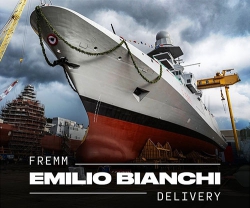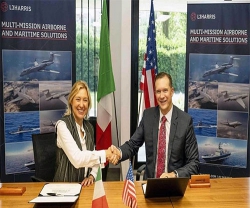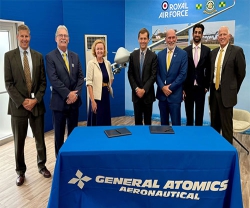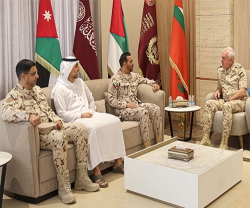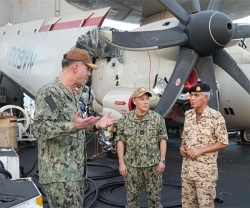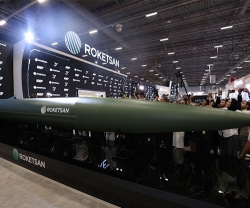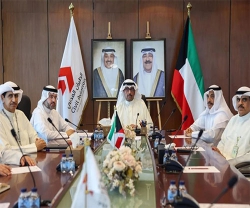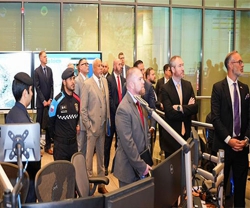Leonardo delivered the first two M-345 jet trainer aircraft to the Italian Air Force, which to-date has ordered 18 units from a total requirement for up to 45 aircraft. The new type, designated T-345A by the Italian Air Force, will gradually replace the 137 MB-339s which have been in service since 1982.
Marco Zoff, Leonardo Aircraft Managing Director, said: “Building on our heritage and expertise in jet trainers, the M-345 will allow our customers to achieve a significant improvement in training effectiveness while at the same time reducing operating costs. This first delivery to the Italian Air Force is a key milestone, the result of a longstanding and productive team working closely together with the operator.”
The new M-345, designed to meet basic and basic-advanced training requirements, will complement the in-service M-346, which is used for advanced pilot training. Leonardo’s integrated training system developed around the M-345 platform, is representative of the company’s technological leadership in training pilots to fly current and future generation aircraft. The system benefits from experience with, and technology developed for, the M-346, which includes a "Live Virtual Constructive" capability. This allows aircraft which are flying live training missions to incorporate simulated "friend" or "foe" elements into scenarios, allowing the pilot to be exposed to the full range of possible operational situations.
The M-345 is a high-performance aircraft which supports a pilot’s transition from basic trainers to latest-generation fighters. The Italian Air Force’s acquisition of the new aircraft is an important step forward in the modernization of its fleet, with the M-345 replacing the MB-339A in Air Force’s second and third military pilot training phases. The M-345 has also been chosen as the new aircraft of the Italian Air Force’s acrobatic team, the “Frecce Tricolori”.
The new M-345 HET (High Efficiency Trainer) reduces the time required for air forces to train pilots. It also gives trainees the chance to fly an aircraft that features higher performance characteristics than other basic/advanced trainer aircraft currently in service around the world. The performance of the M-345 allows it to carry out the most demanding mission types found in a training syllabus, delivering high quality training at significantly lower cost.
The M-345 cockpit architecture is the same as that of frontline fighters. The aircraft is also able to perform operational roles, thanks to an extended flight envelope, with a high-speed maneuvering capability even at high altitudes, modern avionics systems, high load capacity and performance.
The M-345 is designed with a long life-cycle and a two-level approach to maintenance, eliminating the need for expensive general overhauls. The aircraft’s Health and Monitoring Usage System (HUMS) also contributes to a lower cost of ownership.
A sophisticated on-board training simulator confers a number of benefits. For instance, M-345 pilots are able to plan maneuvers before live training, allowing for higher efficiency during flight. Trainees are also able to fly in formation with other pilots in the air and those training on the ground in simulators, via a real-time data-link. The aircraft’s Mission Planning and Debriefing Station (MPDS) allows trainees to analyses the missions they have just flown.
The M-345’s engine is a Williams FJ44-4M-34 turbofan optimized for military and aerobatic use. The cockpit is based on HOTAS (Hands On Throttle-And-Stick) controls and features a glass cockpit with a three-color MFD (Multi-function Display) touch screen. The aircraft’s heads-up display is mirrored on a fourth screen in the rear seat.
Leonardo, a global high-technology company, is among the top ten world players in Aerospace, Defense and Security and Italy’s main industrial company. Organized into five business divisions, Leonardo has a significant industrial presence in Italy, the United Kingdom, Poland and the USA, where it also operates through subsidiaries such as Leonardo DRS (defense electronics), and joint ventures and partnerships: ATR, MBDA, Telespazio, Thales Alenia Space and Avio.
Leonardo competes in the most important international markets by leveraging its areas of technological and product leadership (Helicopters, Aircraft, Aerostructures, Electronics, Cyber Security and Space).
In 2019 Leonardo recorded consolidated revenues of €13.8 billion and invested €1.5 billion in Research and Development.




